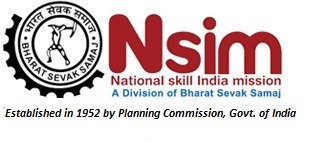Stories you may like
By 2025, it is estimated that 70 per cent of Indians will be of working age. This ‘demographic dividend’ could give India an edge over the developed countries where a larger segment of the population would by then be past retirement. However, this demographic dividend can easily turn into a demographic disaster if a majority of the working age population remains unemployable due to a lack of skills. Even today, one hears of a shortage of skilled workers across industries, which does not augur well for sustaining India’s economic growth. The construction industry lacks sufficient plumbers and construction machine operators, resulting in a slowing of construction activity and increasing the overall cost of projects, posing a major challenge to India’s infrastructure development plans.
In this industry, skills and knowledge are the driving forces of economic growth and social development. The economy becomes more productive, innovative and competitive through the development of more skilled human capital. There is always a difference between knowing and performing, and the gap is explained by inadequacy of skill. By 2030, the country is expected to have 68 cities with a population of more than one million, 13 cities with more than 4 million people and 6 megacities with populations of 10 million or more, with Mumbai and Delhi among the biggest cities worldwide. (Source: Ministry of Urban development) Today, the living standards of people are changing, affordability of people is improving, and therefore adequate housing & infrastructure are at most important for Nation. We have a challenge in both demand & supply. The only solution to this is sustainable habitats. The construction industry in the country needs to provide a shift towards sustainable consumption and production to meet the goals of sustainable development.
The good news is that skills development throughout the construction sector in India has seen a rapid growth in response to the urgent needs of the industry, as well as due to significant impetus provided by the government. The 2009 National Policy on Skill Development laid the institutional structure for skill development in the country at various levels. The three tier institutional structure consists of the PM’s National Council on Skill Development, the National Skill Development Coordination Board and the National Skill Development Corporation, of which these three tiers work in tandem to implement effective knowledge acquisition and training programs aimed at educating India’s construction professionals.













User's Comments
No comments there.